Discover Asturias in 5 days
Located in the North of Spain, Asturias, fed by the landscape and natural wealth, of working class and flag for emblem. The province of Asturias, privileged tourist destination, allows you to enjoy its endless natural landscapes, enjoy a unique gastronomy and an extensive culture, from Visigoths to Napoleon's France. Víctor Manuel already said it: “Asturias, if I could, If I could sing to you…”
LAS ARENAS – CARES ROUTE – SOTRES – INVERNALES DEL TEXU
The Sands (1) It is a town and a parish in the Asturian council of Cabrales. It is located about 140 meters above sea level, and it is one of the most important gateways to the peaks of Europe. In its municipal area is the Naranjo de Bulnes peak, as well as part of the Cares gorge route. Among its places of interest, the church of Santa María de Llas stands out., late Romanesque style, consisting of a main nave and two small side chapels. It also highlights its famous Cabrales Cheese Cave., an exhibition of some 45 minutes of the present and the past of this product that takes place inside a natural cave and ends with a small tasting.

The Cares path (2) It is a hiking route located in the Picos de Europa National Park., the busiest in the entire Cantabrian mountain range. It is part of an old crossing that linked Posada de Valdeón and Poncebos, two small and remote mountain villages, following the deep gorge that cradles the Cares River. Your environment is, in the opinion of many, the most impressive available to people without much experience in the mountains.
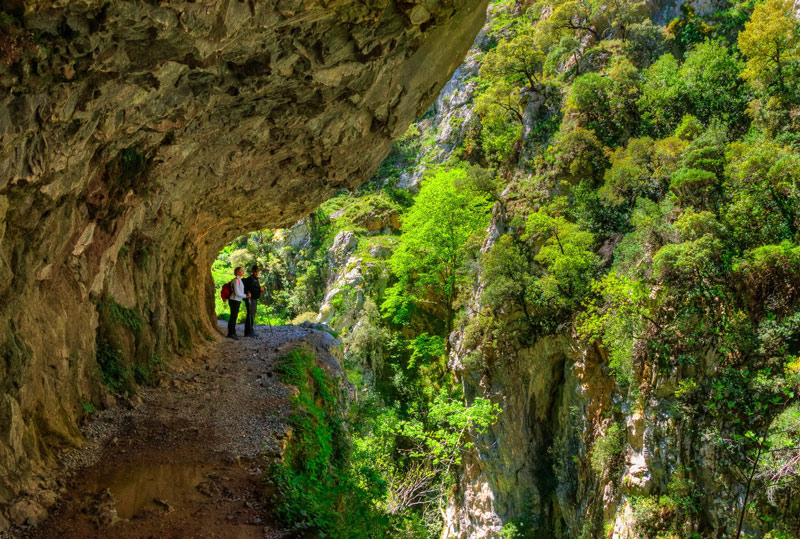
Get on sotres (3) It is a mandatory exercise for landscape lovers, hikers and mountaineers who find in this village the best place to start routes and climbs. It is located at 1050 m of altitude, which makes it one of the highest human strongholds in the principality. From there the view of the mountains impacts, loaded with legends and attractions. It is an urbanized center in which coexistence between ranchers, adventurers and entrepreneurs translates into hospitality establishments and stores with a large quantity of high quality products.

Near Sotres there is a group of buildings known as the Texu Winters (4), shelters or cabins made by shepherds to keep livestock in the adverse weather of the winter seasons. Some of these buildings are in a partially or completely ruined state., with irregular rigging walls and curved tile roofs.
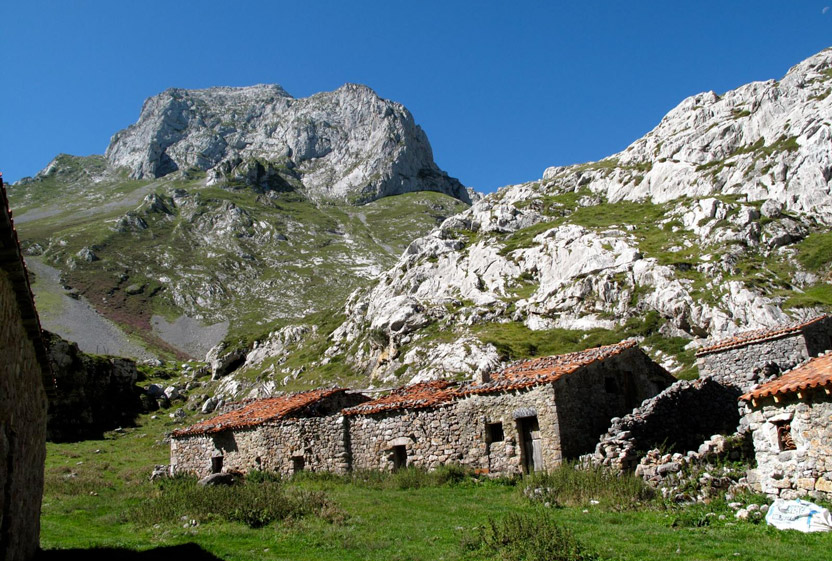
BALLASTS – BOWLS – RIBADESELLA – PRIA BUFFONS
The town of Lasters (1), with its fishing boats and terraced houses, It is home to one of the most famous and beautiful port scenes in Asturias.. Its narrow streets, cobbled and always sloping make up the thousand arteries through which lives develop overlooking a maritime abyss.
The port of Lastres can be seen almost from any point. In it are located, usually, around fifty boats, around a breakwater 55 metros. Despite declining fishing numbers, The demands of nautical tourism place this rich town in the maritime current of eastern Asturias.
In the urban center we find attractions such as the emblematic Clock Tower, the parish church of Santa María de Sábada – which oscillates between classical and baroque styles –, several hermitages, mansions and palaces of the 18th century.
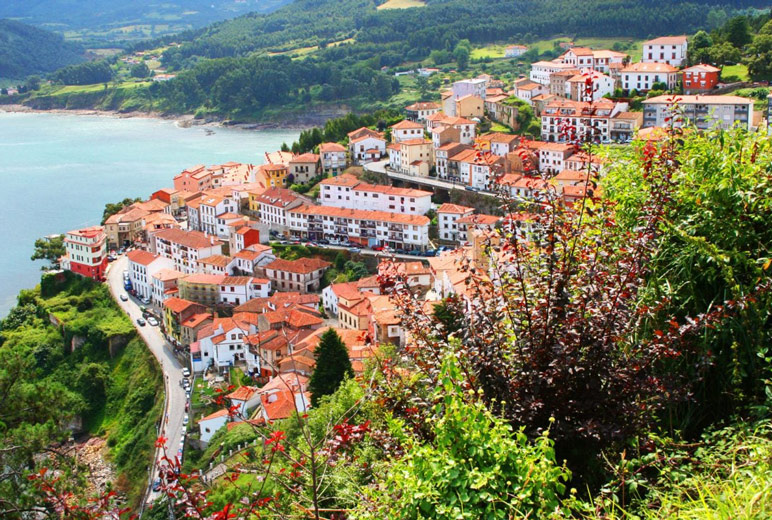
The port of Bowls (2) It is a charming and small enclave that was part of the imperial routes of Charles V in Europe. The arrival of the emperor to the Peninsula in September 1517 Since then it marked the life of this fishing village with a long whaling tradition., where both national and foreign ships dock. The catches that arrive are auctioned at their fish market, so it is easy to taste exquisite fish and seafood in its restaurants and cider bars. Bowls is, definitely, a hidden and friendly town of fishing houses, colorful and with sea aromas.

The next town we visited is Ribadesella (3), a place worth getting lost in for all the time you have available. It has a great monumental heritage. The famous prehistoric paintings and dinosaur footprints of the Tito Bustillo cave stand out, its extensive architectural representation of Romanesque and Baroque periods, its civil buildings, palaces and towers.

A 10 km to the east we find the Pria jesters (4), some vertical holes that connect with the sea, formed a few meters from the edge of a cliff, and that expel jets of sprayed water at full power when the waves are strong enough.

LLANES COUNCIL
He council of Llanes (1) It is located on the edge of the Cantabrian Sea, near the Picos de Europa. It has numerous beaches and good conservation of its monumental heritage.. It extends close to 30 km along the coast at the eastern end of the region. The southern area is dominated by a wall of mountains that are home to valleys dedicated to grazing and abundant caves.. Numerous lithic remains have been found there..
From the Middle Ages, civil and religious architecture stands out, like the remains of the castle located in Soberrón, in the Sierra de la Cuera, he monastery of San Salvador de Celorio (2) or the defensive wall.
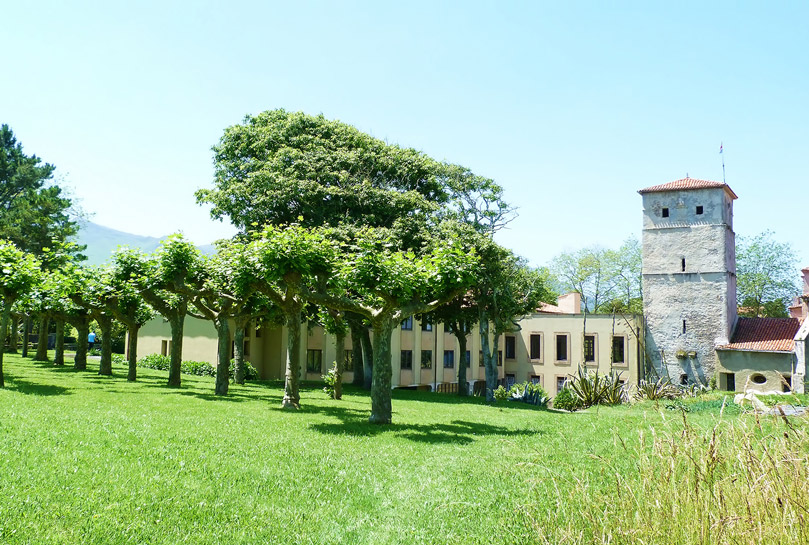
The 19th century left works such as St. Peter's walk (3), from which you can see the town of Llanes and the famous El Sablón beach (4).
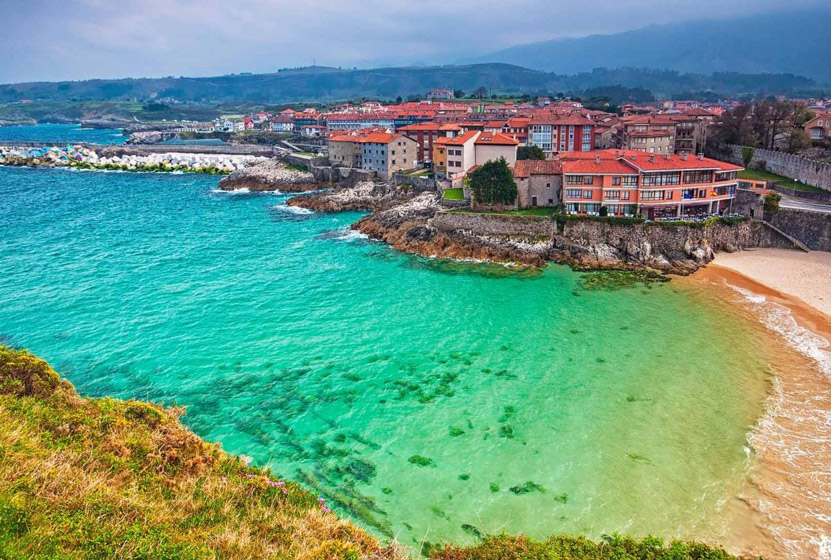
Definitely, Both the council of Llanes and its town have a very extensive artistic heritage in churches, mansions, palaces and houses.
Located on the coast, The town of Llanes enjoys outstanding monuments and fishing traditions. A plaque commemorates the 65 sailors who embarked to be part of the Invincible Armada against England.
As mentioned, preserves part of its walled canvas (5), and inside there are monuments such as the minor basilica of Santa María de la Asunción (6), one of the few examples of Gothic in Asturias.

Besides, Its exterior offers modernist jewels such as the Linares Casino (7), building that translates the air of French influence into decorated balconies, vegetal ornaments or feminine masks.
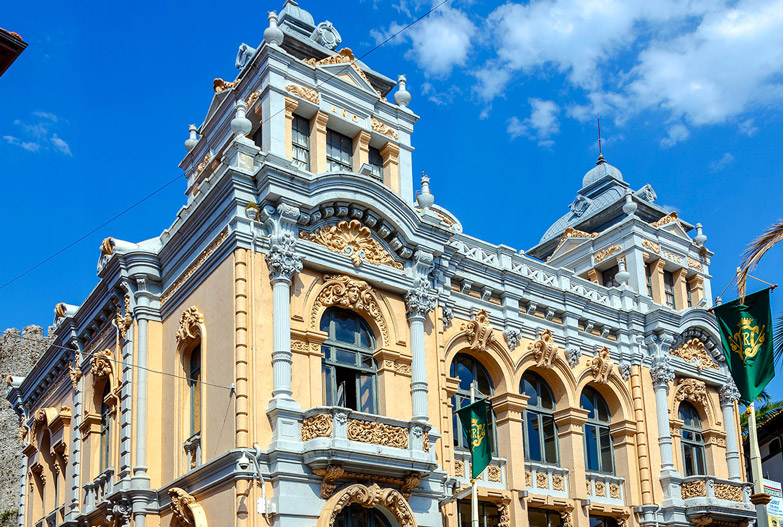
What's more, It is worth highlighting a recent work, The Memory Cubes (8), by the Basque painter Agustín Ibarrola, which consisted of painting the concrete blocks that protect the town's port with various motifs.
In any case, If something is worth highlighting, it is the long walks that are recommended to take through the town's alleys., that surely hide numerous surprises for all types of visitors.

ROYAL SITE OF COVADONGA
Covadonga (1) brings together history, spirituality and nature. On 2018 linked the centenaries of the Coronation of the Virgin of Covadonga, of the creation of the Covadonga Mountain National Park and the origins of the Kingdom of Asturias. And in the 8th century Covadonga became the seed of the first peninsular Christian kingdom, which led to this place becoming a universal spiritual reference and pilgrimage that has remained to this day.. in addition, This space is developed in a unique landscape environment, characterized by a desire for conservation and a pioneering love for nature.
He Repelao field (2) It is the gateway to the Royal Site of Covadonga and the Picos de Europa National Park. Its monumental access columns, its royal obelisk with the image of the Victory Cross, its old train station, Its bridge and its environment indicate that we are facing a historical place full of meaning..

He Prince's Park (3) It is a true haven of peace at the foot of the Holy Cave. This garden has the lushness of the Atlantic forest, It is crossed by the Covadonga River and a simple walk is enough to come across bridges, fuentes, beautiful waterfalls and several buildings of high architectural value. It is about, definitely, of a lung in the heart of Covadonga, a place to walk, relax or take pictures.

On the road that goes up to the Lakes is located what is known as Canons Viewpoint (4), one of the favorite watchtowers to calmly contemplate the Sanctuary and surrender to rest.

The Cruz de Priena (5) It is located at the top of Pico Priena, a mountain in the foothills of the Picos de Europa, very visible from Covadonga. The ascent to the cross is a wonderful excursion that shows splendid views of the entire complex, of other emblematic mountains and the Cantabrian Sea itself.
The best way to enjoy this place is to prepare your visit, since there are more than twenty viewpoints on different routes that offer dream views.

- Somiedo Park
ADDRESS - Aguasmestas
ADDRESS - Aguino
ADDRESS - Bustariega
ADDRESS - Castro
ADDRESS - Llamardal
ADDRESS - Perlunes
ADDRESS - Pineda
ADDRESS - Pola de Somiedo
ADDRESS - Saliencia Lakes
ADDRESS - Alto de la Farrapona
ADDRESS - Cave Lake
ADDRESS - Almagrera Lagoon
ADDRESS - Cerveriz Lake
ADDRESS - Calabazosa Lake
ADDRESS
P. N. OF SOMIEDO – VILLAGES – LAKES OF SOMIEDO
He Somiedo Park (1) It is one of the most important national parks in Spain. Its forests occupy almost a quarter of the park's area, and beech trees abound, robles, ash trees, citadels and lindens, that intersect with meadows, with bush areas, with subalpine vegetation and lakes, lagoons and peat bogs of glacial origin.

The car trip to it passes through picturesque towns and spectacular landscapes., drawn on the banks of the Somiedo river. Aguasmestas (2) It is the entrance town to the natural park. Aguino (3) It grows next to the stream it gives its name to.. Bustariega (4) enjoys beautiful views of Monegro peak. Castro (5) It is located in a narrow valley. Llamardal (6) It is a cowboy village between the Pedralba and Robezo mountains.. Perlunes (7) It is a hidden and beautiful corner at the foot of the mountains. Pineda (8) It is hidden among important forest masses. Pola de Somiedo (9), council capital, It is located between green valleys and spectacular mountains.
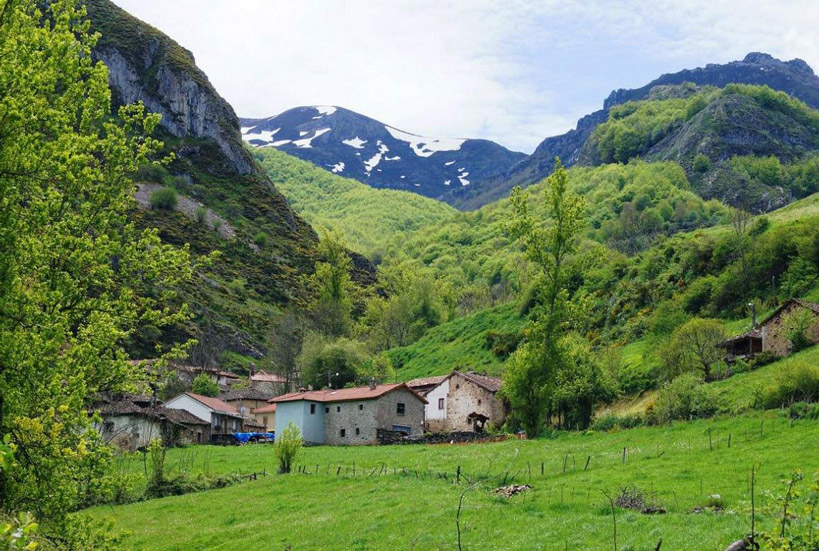
The route of the Saliencia Lakes (10) It is located in the heart of the Somiedo Natural Park and is home to four lakes of glacial origin (Cueva, Pumpkin, Cerveriz and Almagrera) What is a Natural Monument?. The circular route begins at the so-called Alto de la Farrapona (11), whose road access must be done with caution. This is a simple route suitable for the whole family., although it is essential to choose a sunny day to do it.

Next to the parking lot, A perfectly marked track will take us down a gentle descent to the cave lake (12), completely enclosed between steep slopes. A zigzag climb of approximately one and a half kilometers will begin that will give us spectacular panoramic views.. In a short time we will reach the edge of the Almagrera lagoon (13). It is so small that it is even possible to find it without water. It will not take long for the precious Cerveriz lake (14), of dark waters and surrounded by extensive meadows, an ideal area to rest or have a picnic. The road narrows from this point, and soon we went out to meet the Calabazosa Lake (15), that shines with green and blue colors. After circling the lake, we will reach again, from a different perspective, Cave Lake. Once descended to water level, It's time to head back along the same track.
